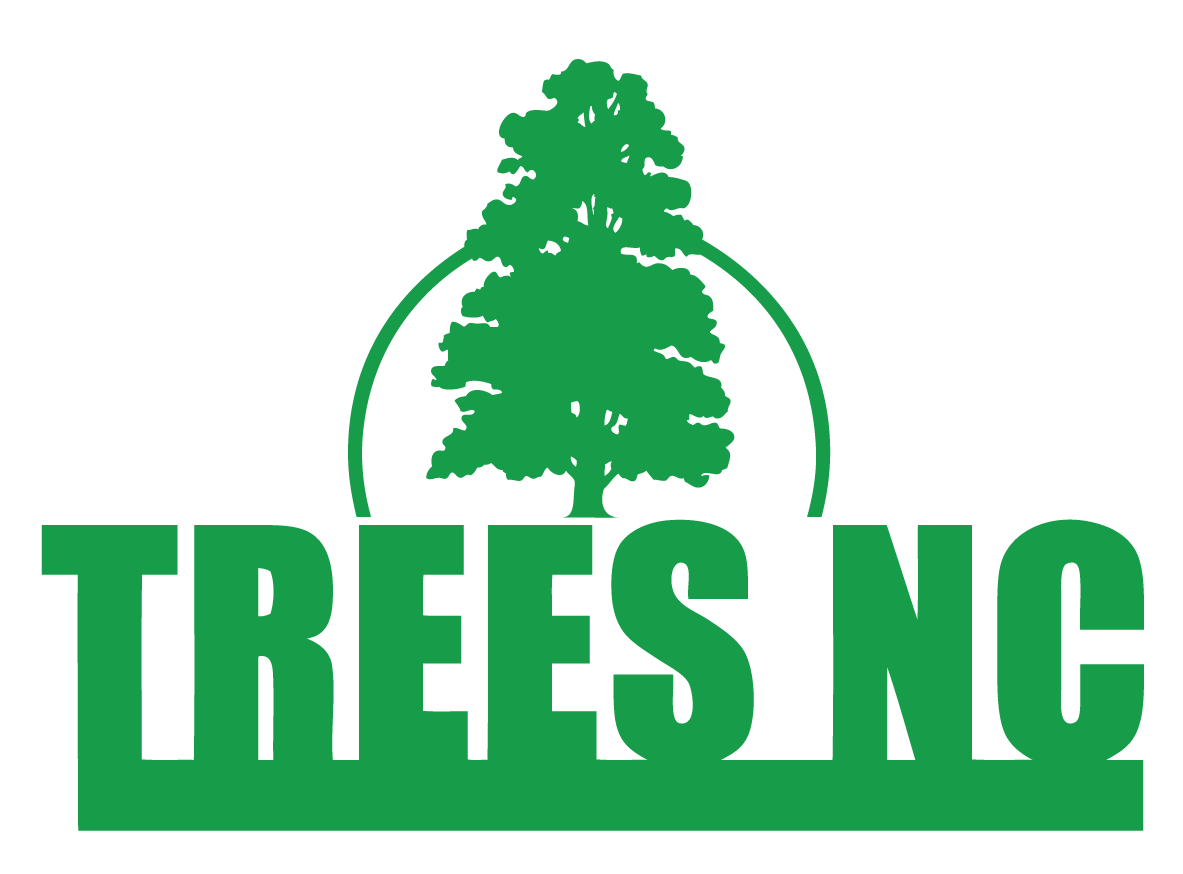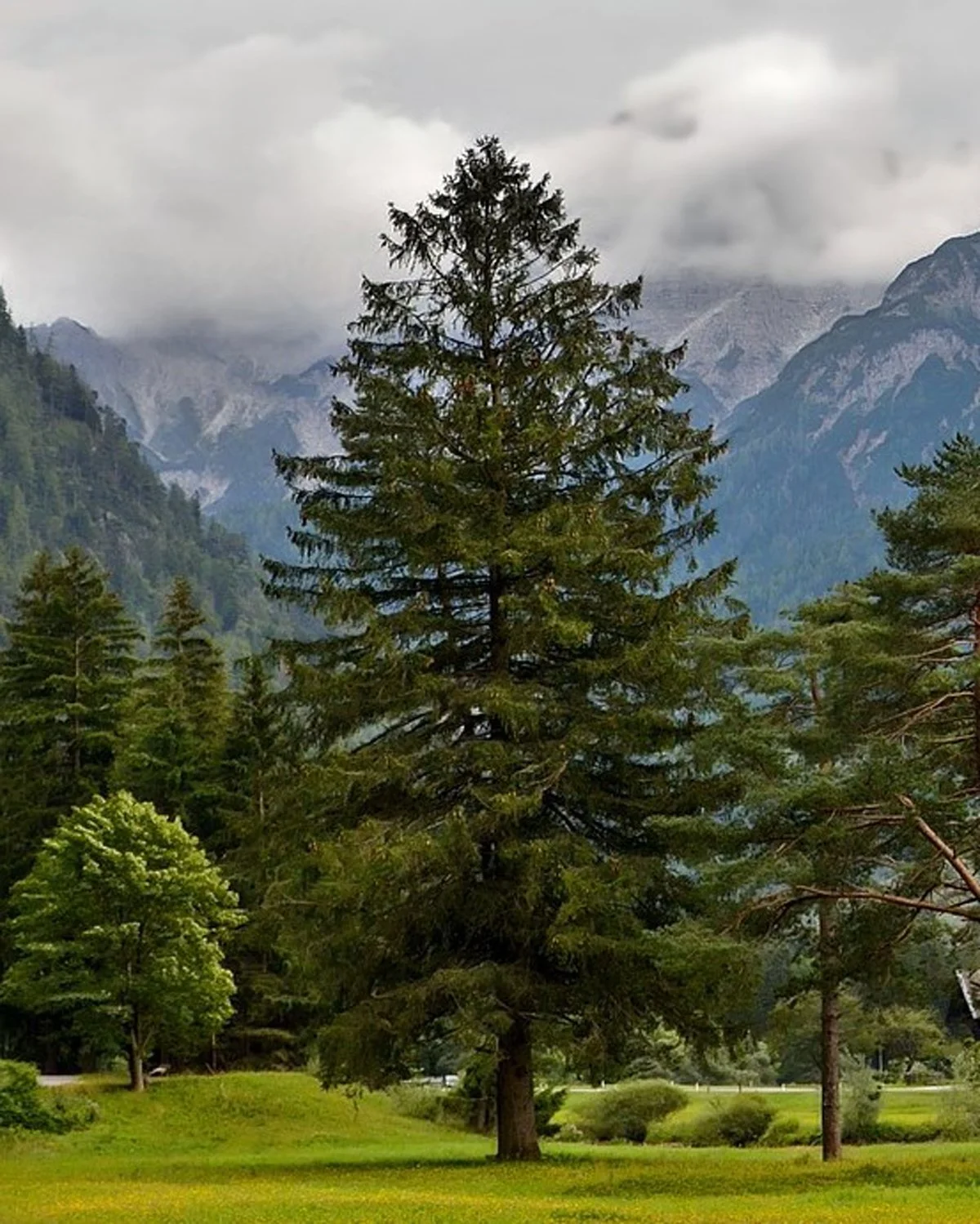Trees and Construction
/
Mary Helen Ferguson
Randolph County is a nice place to live, and as more people discover that and move here, construction of new residences continues. It often happens during construction that trees are damaged, either directly, as when they are run into by equipment, or indirectly. Activities such as parking equipment over the root zones of trees or piling soil or construction debris near trees will not result in immediately obvious damage but can lead to tree death several years later. Trees need air, in addition to water and nutrients, around their roots. Both soil compaction, resulting from equipment moved or parked under the tree, and soil or debris deposited over root zones (e.g., during grading) restrict the amount of air that can get to tree roots.
A first step in protecting trees in preparation for construction is to decide which trees you want to keep and which you will remove. Those that are severely diseased or insect-infested, or are in such condition that they are likely to fall, should be removed before construction begins. For help in deciding which trees pose a potential hazard, you can contact an arborist certified by the International Society of Arboriculture (ISA). Individuals can check to see if a person offering tree care services is an ISA certified arborist on the Trees Are Good web site. In addition to hazardous trees, there may be some trees that you want to remove just because they are not attractive. Trees that are not kept can be chipped and used for mulch around the trees that remain or in areas where there will be construction traffic, although this use may not be a good idea if trees are cut due to certain diseases or insect infestations.
You can try to save desired trees by strategically locating buildings, driveways, and utility trenches. A map with trees and construction plans can be drawn to identify which of the remaining trees will need to be removed. The needs of all parties involved in construction should be considered. Where grading is required, retaining walls may be useful in avoiding the need to cut soil away from or pile soil on top of the root zones of trees.
After deciding which trees to keep, plan for their protection. Recommendations are to prevent construction traffic and activities within a radius of at least 1.25 ft for every inch of trunk diameter. For example, if a tree trunk is 1 ft (12 in.) wide, protect the area within 15 ft of the trunk on all sides. A tree with a trunk that is 3 ft (36 in.) wide would need to be protected to a distance of 45 ft from the trunk! Putting up a tall and brightly colored temporary fence around the tree protection zone (TPZ) is suggested. These fences should be checked over the course of construction to make sure that they remain in place. It is important for all those involved in construction to be informed about the tree protection plans.
Those having a house or other structure built might consider including penalties for TPZ violations in contracts. Contractors and construction professionals, on the other hand, may wish to make tree protection part of their standard routine and market their use of tree-protection practices.
As a side note, some trees may suffer if larger ones around them are removed, even when their root zones are protected. Trees like dogwoods are understory trees (ones that grow in the shade of others) and may suffer when suddenly exposed to full sun conditions. Watering and the use of mulch in the TPZ may help preserve under-story trees.
For more detailed information about protecting trees during construction, you can get a copy of the publication Construction and Tree Protection from NC Cooperative Extension Service, or by calling our office (336-318-6000). This publication is intended not just for individuals but for builders, developers, and local government, as well.
NC Cooperative Extension Agent, Horticulture
TREES NC Board Member
TREES NC Board Member
Randolph County is a nice place to live, and as more people discover that and move here, construction of new residences continues. It often happens during construction that trees are damaged, either directly, as when they are run into by equipment, or indirectly. Activities such as parking equipment over the root zones of trees or piling soil or construction debris near trees will not result in immediately obvious damage but can lead to tree death several years later. Trees need air, in addition to water and nutrients, around their roots. Both soil compaction, resulting from equipment moved or parked under the tree, and soil or debris deposited over root zones (e.g., during grading) restrict the amount of air that can get to tree roots.
A first step in protecting trees in preparation for construction is to decide which trees you want to keep and which you will remove. Those that are severely diseased or insect-infested, or are in such condition that they are likely to fall, should be removed before construction begins. For help in deciding which trees pose a potential hazard, you can contact an arborist certified by the International Society of Arboriculture (ISA). Individuals can check to see if a person offering tree care services is an ISA certified arborist on the Trees Are Good web site. In addition to hazardous trees, there may be some trees that you want to remove just because they are not attractive. Trees that are not kept can be chipped and used for mulch around the trees that remain or in areas where there will be construction traffic, although this use may not be a good idea if trees are cut due to certain diseases or insect infestations.
You can try to save desired trees by strategically locating buildings, driveways, and utility trenches. A map with trees and construction plans can be drawn to identify which of the remaining trees will need to be removed. The needs of all parties involved in construction should be considered. Where grading is required, retaining walls may be useful in avoiding the need to cut soil away from or pile soil on top of the root zones of trees.
After deciding which trees to keep, plan for their protection. Recommendations are to prevent construction traffic and activities within a radius of at least 1.25 ft for every inch of trunk diameter. For example, if a tree trunk is 1 ft (12 in.) wide, protect the area within 15 ft of the trunk on all sides. A tree with a trunk that is 3 ft (36 in.) wide would need to be protected to a distance of 45 ft from the trunk! Putting up a tall and brightly colored temporary fence around the tree protection zone (TPZ) is suggested. These fences should be checked over the course of construction to make sure that they remain in place. It is important for all those involved in construction to be informed about the tree protection plans.
Those having a house or other structure built might consider including penalties for TPZ violations in contracts. Contractors and construction professionals, on the other hand, may wish to make tree protection part of their standard routine and market their use of tree-protection practices.
As a side note, some trees may suffer if larger ones around them are removed, even when their root zones are protected. Trees like dogwoods are understory trees (ones that grow in the shade of others) and may suffer when suddenly exposed to full sun conditions. Watering and the use of mulch in the TPZ may help preserve under-story trees.
For more detailed information about protecting trees during construction, you can get a copy of the publication Construction and Tree Protection from NC Cooperative Extension Service, or by calling our office (336-318-6000). This publication is intended not just for individuals but for builders, developers, and local government, as well.









